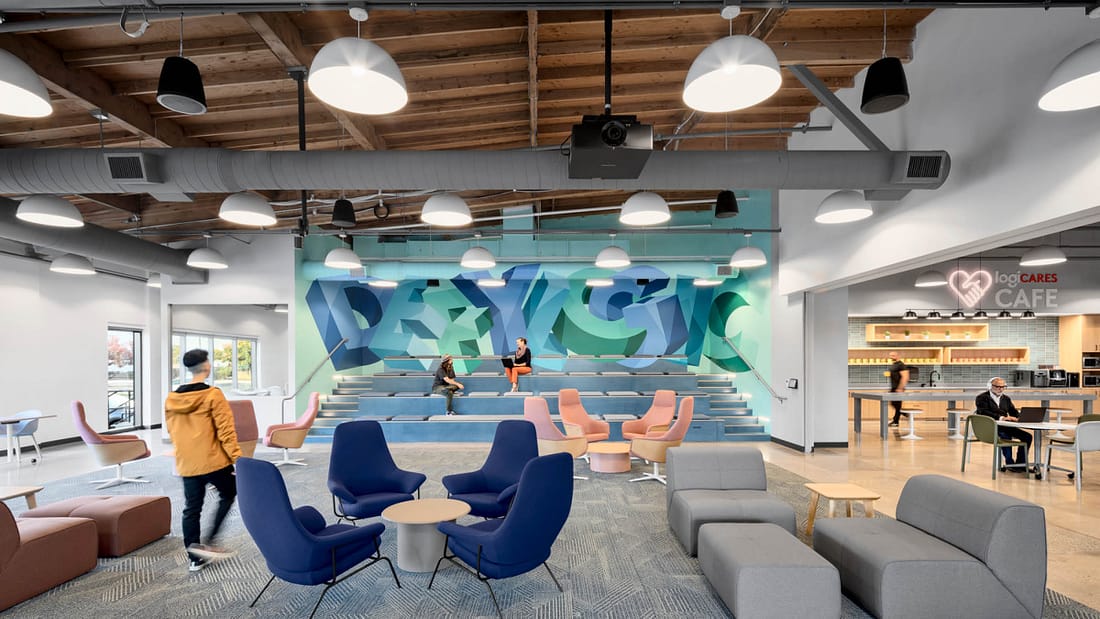The Sustainable Environment:
Averting Landfill:
the FaaS
By Brett Gardner | IA’s Director of Sustainability
& Rob Atkinson | Senior Project Manager, IA's London Studio
Each year in the US alone more than 12 million tons of furniture end up in landfills according to the EPA. Of that number, over 8.5 million tons (think 17 billion pounds) represent office furniture. Furthermore, furniture is a major contributor to the embodied carbon generated by tenant improvement projects. Still, to keep the work environment fresh and up-to-date commercial enterprises understandably remodel on average every five to ten years, requiring updated furniture, which often means new furniture. In a world dangerously impacted by global warming this scenario is no longer sustainable or ideal.
Carbon emissions from the manufacture of furniture, historically under-evaluated, remain overwhelming. Yet when guiding clients to sustainable choices for the workplace, obtaining definitive product information from manufacturers or Environmental Product Declarations (EPDs)—international certification of a product’s production and life cycle impact on the environment and human health—has been challenging. However, with the increasing demand for environmentally sensitive products in workplace design, furniture-as-a-service providers (FaaSs) have come forward with developed carbon emission metrics and EPDs. In the battle to contain global warming and build a circular economy, engaging with a FaaS on a design project can offer a positive route to quell toxic emissions, advance the circular economy, and reduce landfills.

TBG Partners Austin | Photography by © Andrea Calo
What is Furniture-as-a-Service?
In a nutshell, a FaaS recycles furniture for the duration of the product’s life cycle for sustainability and to client advantage. When skillfully renovated—a process that can be repeated over and over with minimum waste—recycled furniture becomes the fresh, compelling product envisioned to realize design objectives, aesthetic intent, and functionality. Partnering with a FaaS is an innovative approach, a way of collaborating requiring a shift in mindset and method—the client and the project design team partner with the FaaS.
Guided by its design team, the client contracts with the FaaS for a long or short term. By renovating the client’s existing furniture, drawing on an inventory of recycled furniture, or exchanging the client’s furniture for that of another client, the FaaS sources and manages the right furniture to achieve the design’s intent. Neither aesthetics nor quality are compromised. Warranty and service agreements for recycled furniture are equivalent to those of new products, supporting client confidence in the furniture’s performance for the length of the agreement. From time to time, minor updates may enhance existing client furnishings, for example, a privacy-screen attachment might be added to workstations.

Sobeys Toronto | Photography by © doublespace photography

Logitech San Jose | Photography by © Gary Belinksy
When the client is finished with the furniture, the FaaS takes it back under pre-set terms with minimal financial impact. Returned furniture will be repaired, refurbished, and recycled for another life cycle. If the client is pursuing a new project design, the FaaS can source appropriate furniture options continuing the relationship. When furniture reaches the end of its life cycle and cannot be recycled, full circular economy practices recover its recyclable material for reuse, diverting as much as possible from landfills.
A project's overall refresh and brand are emphasized through non-furniture aspects and elements of the space, which might include experiential graphics. Architectural creativity in planning and design will drive the overall aesthetic. Ideally, the furniture will be based on neutral palettes and finishes to make it more easily adaptable for the future, but that does not rule out bold colors and patterns when requested or required.
The furniture industry moving forward might consider the universal design of a kit of parts with semi-customization options. Construction could be based on components built for disassembly and reuse. Furthermore, major furniture manufacturers might own and manage the furniture they produce.

Confidential Client Boston | Photography by © Robert Benson
Multiple Advantages
This new model can be advantageous for all enterprises and easily aligns with changing business requirements and opportunities. The adoption of a FaaS partnership based on an organization’s projected growth, restructuring, relocation, or in response to changing workstyles, processes, and business models offers agility and economy—especially attractive given the current trend toward shorter leases and reduced space. No need to invest in a costly furniture purchase, which can be a potential disincentive for new businesses. A FaaS arrangement is particularly attractive in terms of time, flexibility, and cost for small and medium-sized enterprises that represent 99% of all businesses in the EU, as well as in the U.S. where small businesses represent 99.9% of all businesses.
In the battle to contain global warming and build a circular economy, Scope 3 emissions—those emissions associated with an organization’s activities for which it is not directly responsible—can be challenging to quantify. However, since FaaSs track the provenance and sustainability of their offerings’ materiality, that accountability can help clients meet ESG and sustainability goals.
If not feasible for an entire project, a client might consider recycled furniture for a portion of the project. If the client has a unique set of requirements that requires new furniture, then furniture with sustainable product labeling, certifications, and declarations should be sourced, allowing that furniture to be easily recycled in the future.

Confidential Financial Client Belgrade, Serbia | Photography by © Relja Ivanić
Conclusion
Although all FaaSs are not equally suitable for every project, the design team working with the client is well-equipped to identify those providers most advantageous. By collaborating with a FaaS, the client and design team can ensure optimum furniture choices with the right terms for the client while diverting waste from landfills, minimizing harm to the environment, quelling toxic emissions, and advancing the circular economy.
All images in this post illustrate the versatility and design impact that can be achieved using a neutral palette for furniture.

Brett Gardner
IA's Director of Sustainability

